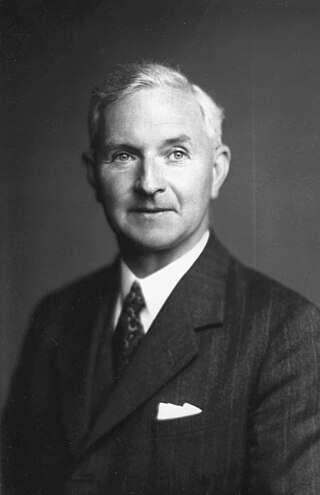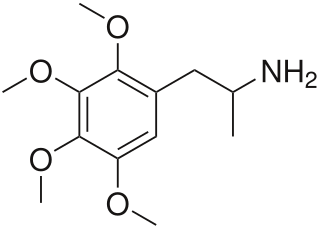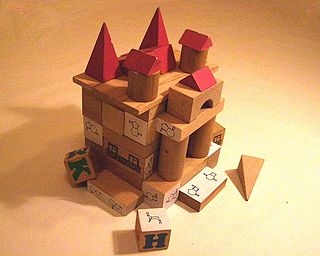Related Research Articles

Computational chemistry is a branch of chemistry that uses computer simulations to assist in solving chemical problems. It uses methods of theoretical chemistry incorporated into computer programs to calculate the structures and properties of molecules, groups of molecules, and solids. The importance of this subject stems from the fact that, with the exception of some relatively recent findings related to the hydrogen molecular ion, achieving an accurate quantum mechanical depiction of chemical systems analytically, or in a closed form, is not feasible. The complexity inherent in the many-body problem exacerbates the challenge of providing detailed descriptions of quantum mechanical systems. While computational results normally complement information obtained by chemical experiments, it can occasionally predict unobserved chemical phenomena.

A covalent bond is a chemical bond that involves the sharing of electrons to form electron pairs between atoms. These electron pairs are known as shared pairs or bonding pairs. The stable balance of attractive and repulsive forces between atoms, when they share electrons, is known as covalent bonding. For many molecules, the sharing of electrons allows each atom to attain the equivalent of a full valence shell, corresponding to a stable electronic configuration. In organic chemistry, covalent bonding is much more common than ionic bonding.

Theoretical chemistry is the branch of chemistry which develops theoretical generalizations that are part of the theoretical arsenal of modern chemistry: for example, the concepts of chemical bonding, chemical reaction, valence, the surface of potential energy, molecular orbitals, orbital interactions, and molecule activation.

Sir John Edward Lennard-Jones was a British mathematician and professor of theoretical physics at the University of Bristol, and then of theoretical science at the University of Cambridge. He was an important pioneer in the development of modern computational chemistry and theoretical chemistry.
Cheminformatics refers to the use of physical chemistry theory with computer and information science techniques—so called "in silico" techniques—in application to a range of descriptive and prescriptive problems in the field of chemistry, including in its applications to biology and related molecular fields. Such in silico techniques are used, for example, by pharmaceutical companies and in academic settings to aid and inform the process of drug discovery, for instance in the design of well-defined combinatorial libraries of synthetic compounds, or to assist in structure-based drug design. The methods can also be used in chemical and allied industries, and such fields as environmental science and pharmacology, where chemical processes are involved or studied.

Medicinal or pharmaceutical chemistry is a scientific discipline at the intersection of chemistry and pharmacy involved with designing and developing pharmaceutical drugs. Medicinal chemistry involves the identification, synthesis and development of new chemical entities suitable for therapeutic use. It also includes the study of existing drugs, their biological properties, and their quantitative structure-activity relationships (QSAR).

In biology and other experimental sciences, an in silico experiment is one performed on a computer or via computer simulation software. The phrase is pseudo-Latin for 'in silicon', referring to silicon in computer chips. It was coined in 1987 as an allusion to the Latin phrases in vivo, in vitro, and in situ, which are commonly used in biology. The latter phrases refer, respectively, to experiments done in living organisms, outside living organisms, and where they are found in nature.

In medicinal chemistry and molecular biology, a pharmacophore is an abstract description of molecular features that are necessary for molecular recognition of a ligand by a biological macromolecule. IUPAC defines a pharmacophore to be "an ensemble of steric and electronic features that is necessary to ensure the optimal supramolecular interactions with a specific biological target and to trigger its biological response". A pharmacophore model explains how structurally diverse ligands can bind to a common receptor site. Furthermore, pharmacophore models can be used to identify through de novo design or virtual screening novel ligands that will bind to the same receptor.
Mathematical chemistry is the area of research engaged in novel applications of mathematics to chemistry; it concerns itself principally with the mathematical modeling of chemical phenomena. Mathematical chemistry has also sometimes been called computer chemistry, but should not be confused with computational chemistry.
A structural analog, also known as a chemical analog or simply an analog, is a compound having a structure similar to that of another compound, but differing from it in respect to a certain component.

Tetramethoxyamphetamine, or 2,3,4,5-tetramethoxyamphetamine, is a lesser-known psychedelic drug and a substituted amphetamine. Tetramethoxyamphetamine was first synthesized by Alexander Shulgin. In his book PiHKAL , the minimum dosage is listed as 50 mg, and the duration unknown. Tetramethoxyamphetamine produces a threshold, mydriasis, and a headache. Limited data exists about its pharmacological properties, metabolism, and toxicity.
In the fields of chemical graph theory, molecular topology, and mathematical chemistry, a topological index, also known as a connectivity index, is a type of a molecular descriptor that is calculated based on the molecular graph of a chemical compound. Topological indices are numerical parameters of a graph which characterize its topology and are usually graph invariant. Topological indices are used for example in the development of quantitative structure-activity relationships (QSARs) in which the biological activity or other properties of molecules are correlated with their chemical structure.
Molecular descriptors play a fundamental role in chemistry, pharmaceutical sciences, environmental protection policy, and health researches, as well as in quality control, being the way molecules, thought of as real bodies, are transformed into numbers, allowing some mathematical treatment of the chemical information contained in the molecule. This was defined by Todeschini and Consonni as:

Chemical similarity refers to the similarity of chemical elements, molecules or chemical compounds with respect to either structural or functional qualities, i.e. the effect that the chemical compound has on reaction partners in inorganic or biological settings. Biological effects and thus also similarity of effects are usually quantified using the biological activity of a compound. In general terms, function can be related to the chemical activity of compounds.

Arylcyclohexylamines, also known as arylcyclohexamines or arylcyclohexanamines, are a chemical class of pharmaceutical, designer, and experimental drugs.
Nenad Trinajstić was a Croatian chemist and one of pioneers of the chemical graph theory.

Building block is a term in chemistry which is used to describe a virtual molecular fragment or a real chemical compound the molecules of which possess reactive functional groups. Building blocks are used for bottom-up modular assembly of molecular architectures: nano-particles, metal-organic frameworks, organic molecular constructs, supra-molecular complexes. Using building blocks ensures strict control of what a final compound or a (supra)molecular construct will be.
Alexandros Makriyannis is an American biochemist and professor of chemistry and chemical biology in the department of medicinal chemistry at Northeastern University in Boston, Massachusetts, where he directs the Center for Drug Discovery and holds the George Behrakis Chair of Pharmaceutical Biotechnology. His research has focused on the biochemical basis of the endocannabinoid system and on the development of synthetic cannabinoids.
References
- ↑ Lemont B. Kier: art, science and green cheese. G. Restrepo, Curr. Comput-Aid Drug. 12, 314-324 (2016)
- ↑ See, for instance Richmond Times and Dispatch, Feb. 26, 2004 "Three Named Top Virginia Scientists"
- ↑ "INSIDE AAPS: AAPS Awards and Fellows - Award Recipients Listing". Archived from the original on 2009-12-14. Retrieved 2009-08-28.
- ↑ L. B. Kier, My Journey Through Structure: The Structure of My Journey, Internet Electron. J. Mol. Des. 2006, 5, 181–191,
- ↑ "From chemical topology to three-dimensional geometry" by Alexandru T. Balaban, Springer Books, 1997, p. 7
- ↑ Molecular drug properties: measurement and prediction - Google Books Result by Raimund Mannhold, Wilel VVH (2007) pp. 88-90
- ↑ Molecular Connectivity and SAR of General Anesthetics. T. Dipaolo, L. B. Kier and L. H. Hall, Molec. Pharmacol., 13, 31 (1977)
- ↑ Lemont B. Kier: a bibliometric exploration of his scientific production and its use. G. Restrepo, E. J. Llanos and A. E. Silva, Curr. Comput-Aid Drug. 9, 491-505 (2013)
- ↑ Molecular Orbital Theory In Drug Research. L. B. Kier, Academic Press, New York (1971)
- ↑ Molecular Connectivity In Chemistry and Drug Research L. B. Kier and L. H. Hall, Academic Press, New York (1976)
- ↑ Molecular Connectivity in Structure Activity Analysis. L. B. Kier and L. H. Hall, John Wiley Publ, London (1986)
- ↑ Molecular Structure Description: The Electrotopological State L. B. Kier and L. H. Hall, Academic Press, San Diego, (1999)
- ↑ Medicinal Chemistry and Physics for Nurse Anesthetists L. B. Kier and C. Dowd Amer. Assoc. of Nurse Anesthetists, Chicago (2004)
- ↑ Cellular Automata Modeling of Chemical Systems. L. B. Kier, P. G. Seybold and C.-K. Cheng, Springer, Amsterdam (2005)
- ↑ Science and Complexity for Life Science Students. L. B. Kier, Kendall/Hunt, Dubuque, IO, (2007)